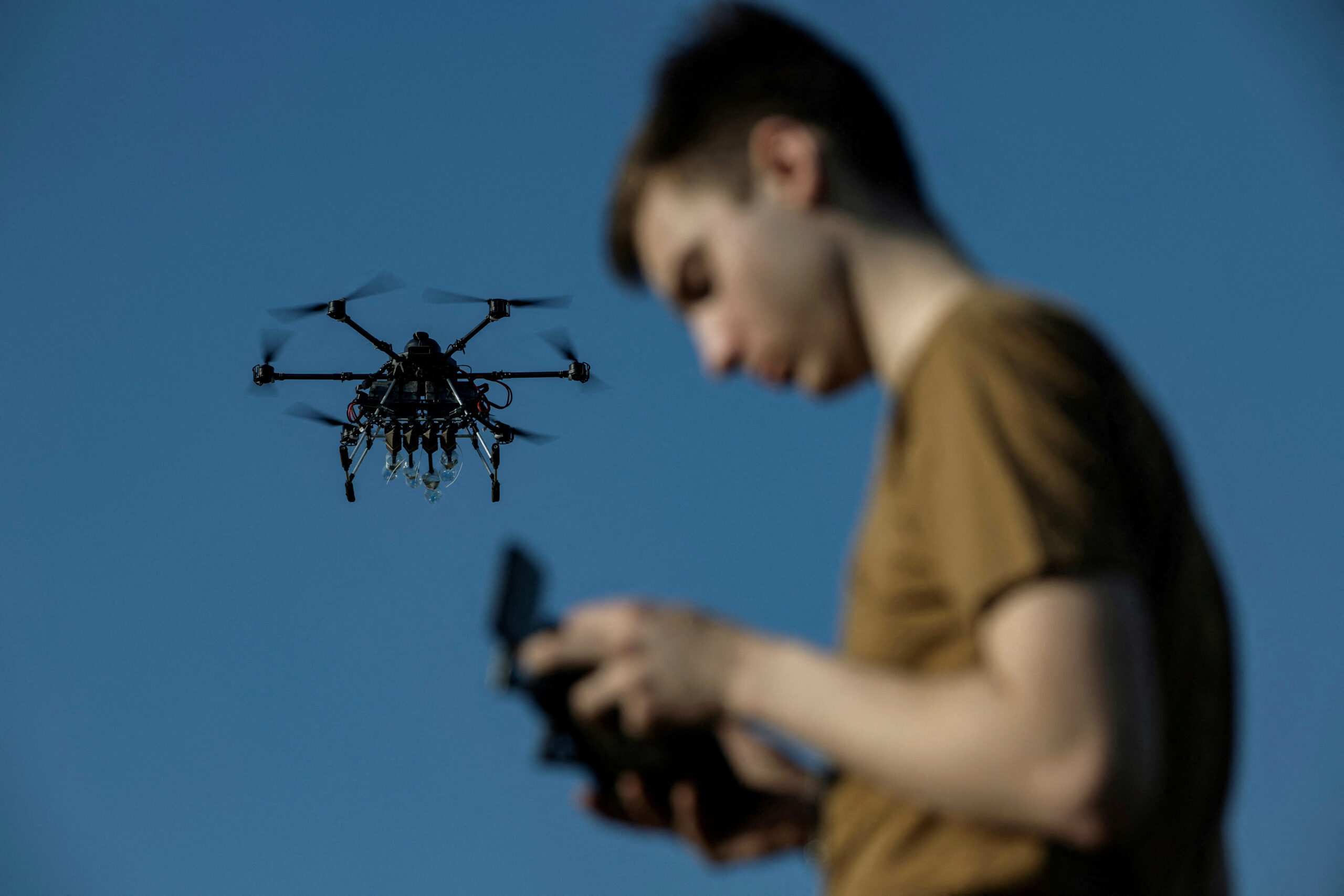As Russia’s summer offensive continues to unfold along a front line measuring hundreds of miles, Ukraine’s overstretched military finds itself heavily reliant on drones to prevent any major breakthroughs. The Ukrainian military’s innovative and rapidly evolving use of unmanned aerial vehicles to create a layered defense is often referred to as a “drone wall.” If this Ukrainian drone wall can prove itself over the coming months and blunt Putin’s big offensive, this will likely shape future defensive doctrine in military academies across Europe and beyond.
The military use of unmanned aerial vehicles has evolved dramatically since the onset of Russia’s invasion more than three years ago, leading many to call the current conflict the world’s first ever full-scale drone war. As the invasion enters a fourth summer, drones are currently thought to account for around 70 percent of all Russian and Ukrainian battlefield casualties.
Ukraine’s drone wall tactics emerged out of military necessity and are part of this far broader shift toward the dominance of unmanned systems on the modern battlefield. Following Russia’s victory in the Battle of Avdiivka in early 2024, Ukraine found itself on the defensive and facing severe shortages of artillery amid delays in anticipated US aid. Kyiv responded by turning to drones as a cheap and effective substitute for more conventional munitions.
While drones lack the firepower to completely replace artillery, Ukraine’s deployment of drones to create defensive corridors many miles deep has proved remarkably effective. Drones are used both for surveillance purposes and to conduct airstrikes, making it extremely difficult for enemy forces to concentrate and launch large-scale offensive operations. The impact of this approach can be seen in the sheer scale of the damage being done to Putin’s invading army. Britain’s International Institute for Strategic Studies has estimated that Russian losses in 2024 included around 1400 tanks along with more than 3700 armored vehicles.
As Ukraine’s drone wall has taken shape over the past eighteen months, Russian commanders have been forced to adapt their own tactics. Instead of depending on large armored columns to punch through Ukrainian defenses, Russia has becoming increasingly reliant on small infantry units working to achieve local advances. Rather than traveling in armored vehicles, soldiers now often use highly mobile forms of transport such as motorcycles and buggies in order to evade drones.
Russia is mirroring Ukraine’s progress in the field of drone warfare as the two nations compete in a daily race to innovate and gain a battlefield advantage. At present, the Russians have managed to achieve a significant edge through the large-scale manufacture and deployment of drones operated via fiber optic cables. This low-tech category of drone has been hailed by some as a game changer as such models cannot be jammed using existing electronic warfare tools.
Meanwhile, Russia is increasingly targeting Ukrainian drone operators and the radar stations they depend on. This is making it significantly more difficult for Ukraine to maintain comprehensive drone coverage in depth along the front lines of the war, while creating gaps for Russian infantry units to exploit.
Eurasia Center events

The strength of Ukraine’s drone wall depends on a number of factors including increased volumes, technological advances, and integration into existing military structures. Domestic Ukrainian drone production has skyrocketed since 2022, with hundreds of new companies entering the market. As a result, annual output is set to reach four million drones this year, according to Ukrainian Defense Minister Rustem Umerov.
Despite this progress, Ukrainian drone manufacturing remains hampered by financial constraints. Speaking during the recent NATO summit, Ukrainian President Volodymyr Zelenskyy stated that Ukraine could potentially produce eight million drones annually but currently lacks the funding to do so. He argued that making up this shortfall was a priority, not only for Ukraine but for the future of European security.
In order to improve the integration of drone units into the Ukrainian army, the country has established a new branch of the military dedicated to drone warfare. Ukraine’s Unmanned Systems Forces are at the forefront of efforts to enhance the drone wall and improve other aspects of the country’s drone operations. In spring 2025, Ukraine also launched the Drone Line initiative, which aims to build on the experience of the Ukrainian military’s most effective drone units and expand on the drone wall concept in order to establish a “kill zone” with a depth of up to fifteen kilometers.
Ukraine’s innovative use of drones to slow Russia’s advance is attracting plenty of attention among Kyiv’s European partners. In April 2025, Germany and six other NATO member states unveiled plans for a drone wall initiative of their own. This envisioned defensive formation will stretch along NATO’s eastern flank, from Norway in the far north down to Poland. The goal is to deter Russia with a combination of AI-powered reconnaissance and counter-drone systems.
Meanwhile, Britain and Ukraine recently announced a new agreement to jointly produce Ukrainian-designed drones, with financing coming from the UK government. This cooperation reflects growing recognition among Kyiv’s allies that Ukraine is no longer a mere recipient of military aid and has become a valuable security partner with unique experience of modern warfare. British troops are also reportedly receiving training from Ukrainian specialists in drone warfare.
Ukraine’s drone wall alone will not be enough to stop the invading Russian army. But with sufficient funding, effective coordination, and the right support from more conventional weapons systems, there are good reasons to believe that this approach can make it extremely difficult for the Russian army to achieve major battlefield breakthroughs. This will be put to the test during what promises to be an intense summer campaigning season as Putin pushes his commanders to deliver results, whatever the cost. If Ukraine’s drone wall can stand firm, it will likely be recognized as an essential element in Europe’s future defense against Russia.
David Kirichenko is an associate research fellow at the Henry Jackson Society.
The views expressed in UkraineAlert are solely those of the authors and do not necessarily reflect the views of the , its staff, or its supporters.

The Eurasia Center’s mission is to enhance transatlantic cooperation in promoting stability, democratic values, and prosperity in Eurasia, from Eastern Europe and Turkey in the West to the Caucasus, Russia, and Central Asia in the East.
Image: Ukrainian serviceman of the 13th operational NGU Khartiia Brigade with the call signs ‘Chipok’ controls the Vampire drone during test and training flight, amid Russia’s attack on Ukraine, at an undisclosed location in the Kharkiv region, Ukraine. April 22, 2025. (REUTERS/Marko Djurica)








